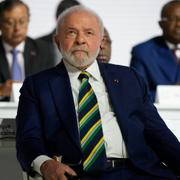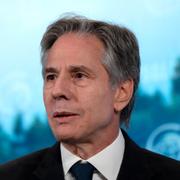
Länderna överens: Slut på hot om oljeregionen
Venezuela och Guyana har slutit en överenskommelse om att inget av länderna ska hota om att ”bruka våld” i konflikten om den oljerika gränsregionen Essequibo i Guyana, rapporterar AP.
Överenskommelsen nåddes när Venezuelas president Nicolás Maduro och Guyanas president Irfaan Ali träffades i på önationen Saint Vincent i veckan. De ska även träffas vid ett senare tillfälle i Brasilien.
Konflikten har lett till ökad oro för att krig ska bryta ut i Sydamerika, särskilt efter att Venezuela i strid mot FN-domstol hållit en folkomröstning om att regionen ska tillhöra Venezuela.
bakgrund
Guyana–Venezuela territorial dispute
Wikipedia (en)
A territorial dispute between Guyana and Venezuela regarding the Essequibo region, also known as Esequibo or by the Venezuelan term Guayana Esequiba (Spanish pronunciation: [ɡwaˈʝana eseˈkiβa] ), a 159,500 km2 (61,600 sq mi) area west of the Essequibo River. The territory is controlled by Guyana based on the 1899 Paris Arbitral Award but is also claimed by Venezuela. The boundary dispute was inherited from the colonial powers (Spain in the case of Venezuela, and the Netherlands and the United Kingdom in the case of Guyana) and has persisted following the independence of Venezuela and Guyana.
In 1840, the British government commissioned German-born explorer and naturalist Robert Hermann Schomburgk to survey British Guiana's boundaries. This survey resulted in what came to be known as the "Schomburgk Line", which went well beyond the area of British occupation and gave British Guiana control of the mouth of the Orinoco River. These borders were disputed by Venezuela, and tensions worsened after the discovery of gold mines in the region in 1876, culminating with Venezuela severing diplomatic relations with the United Kingdom in 1887. The United Kingdom and Venezuela went into arbitration with mediation from the United States, which resulted in the Paris Arbitral Award in 1899 and ruled largely in favour of Britain. In 1949, a memorandum written by Severo Mallet-Prevost, official secretary of the US–Venezuela delegation in the arbitration, and published posthumously stated that the Arbitral Award resulted from the pressure by the Tribunal President Friedrich Martens and a political deal between Russia and Britain. Said memorandum led to complaints by Venezuela in the United Nations in 1962, which resulted in the Geneva Agreement, signed with the United Kingdom in 1966.
The status of the territory is subject to the Geneva Agreement, which was signed by the United Kingdom, Venezuela, and British Guiana on 17 February 1966. This treaty stipulates that the parties will agree to find a practical, peaceful, and satisfactory solution to the dispute. Should there be a stalemate, according to the treaty, the decision as to the means of settlement is to be referred to an "appropriate international organ" or, failing agreement on this point, to the Secretary-General of the United Nations. The Secretary-General referred the entire matter to the International Court of Justice (ICJ). On 18 December 2020, the ICJ accepted the case submitted by Guyana to settle the dispute. In December 2023, Venezuela held a referendum asking the Venezuelan electorate whether the region should become a state of Venezuela and its population become citizens, where it declared that the results showed overwhelming support for such action. No vote was held in the disputed region.Currently, Venezuela claims all of the land west of the Essequibo river, which it refers to as Zona en Reclamación or Zone in Reclamation. Historically, this did not include the tributaries of the Amazon river and the Pirara area which were only ceded to British Guiana in 1904 during arbitration with Brazil. The Northwestern border of the Essequibo follows the 1905 border as established by the British-Venezuelan Mixed Boundary Commission, in accordance with the Arbitral Award of 3 October 1899. Venezuela currently seeks to abrogate the legal borders and currently agrees only to the Essequibo River boundary.
Essequibo
Omni är politiskt obundna och oberoende. Vi strävar efter att ge fler perspektiv på nyheterna. Har du frågor eller synpunkter kring vår rapportering? Kontakta redaktionen


